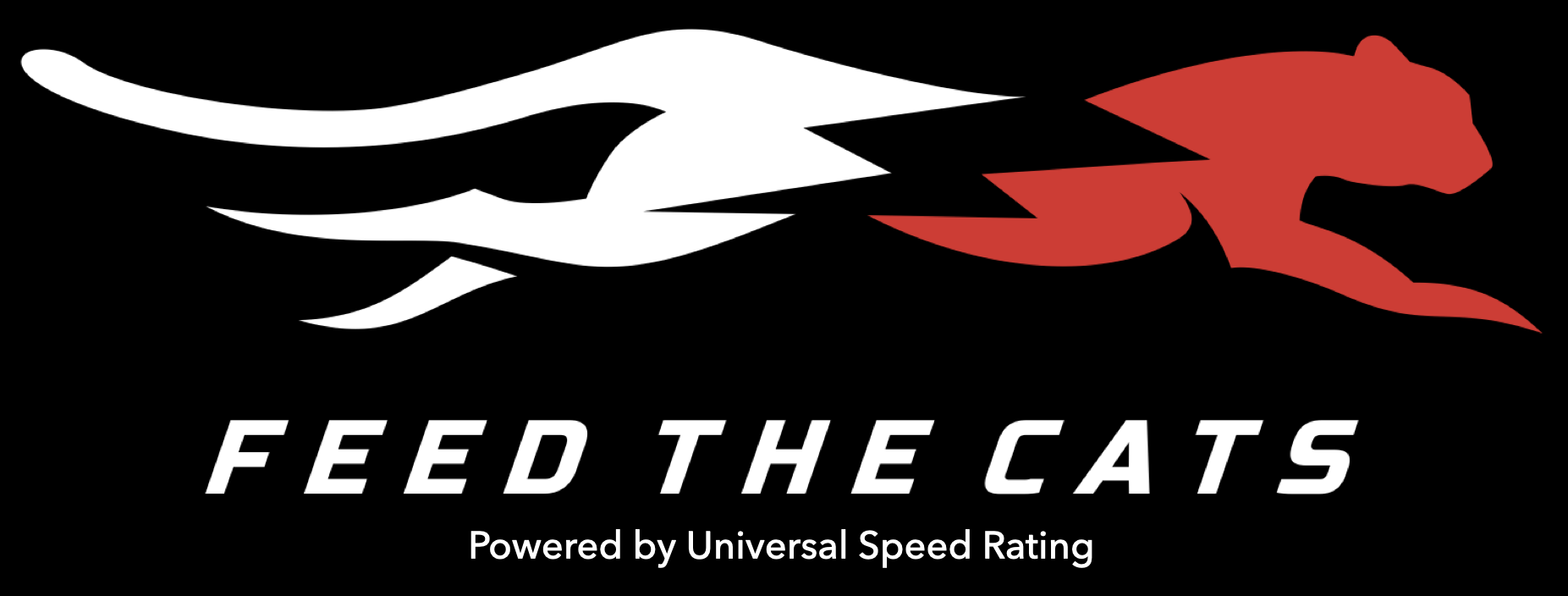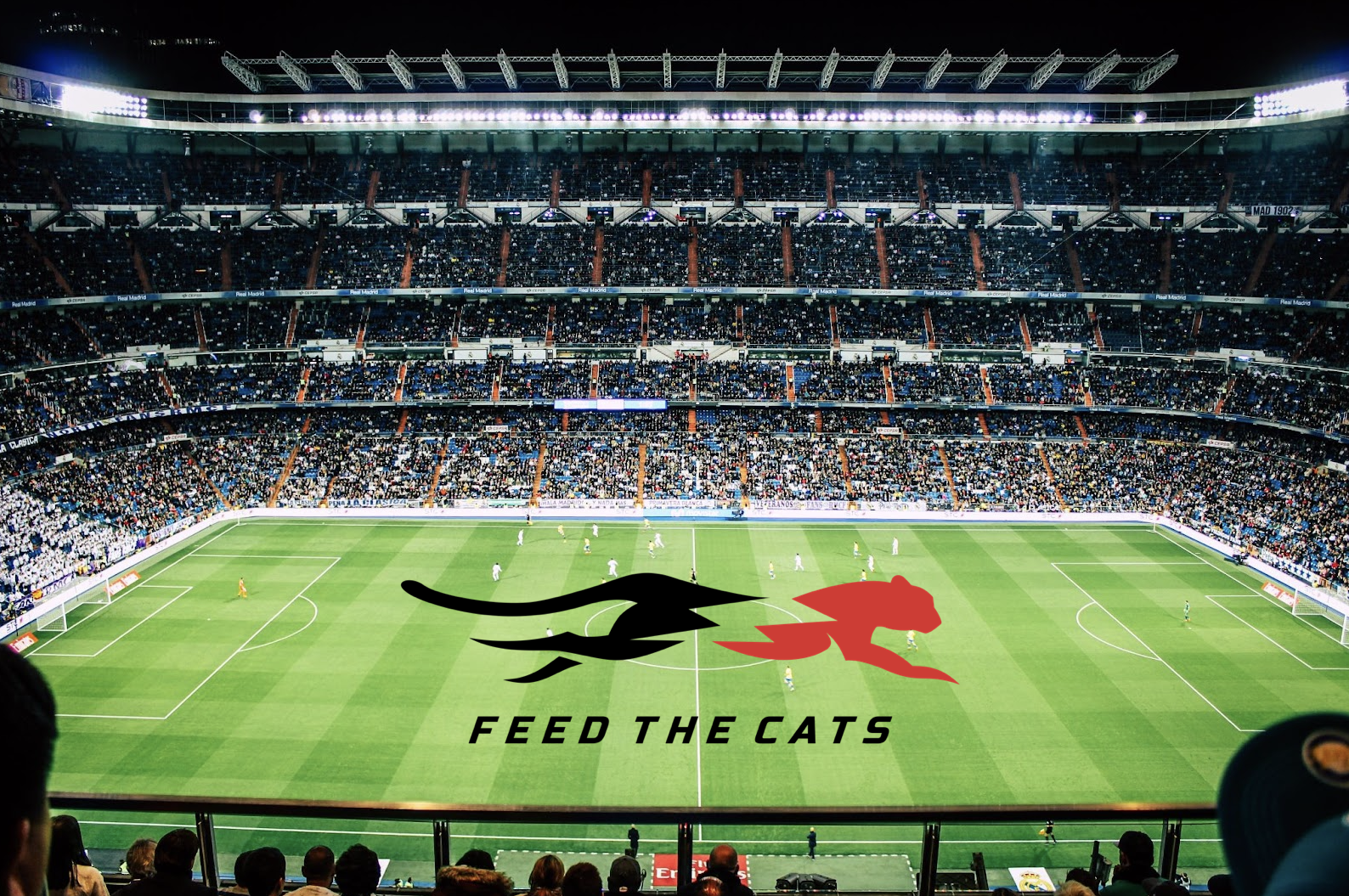
SOCCER: TEN WAYS TO FEED THE CATS
“Feed the Cats” began in 1999 as a new approach to make track and field a more enjoyable sport by focusing on speed instead of running laps. The Origin and Philosophical Basis of “Feed the Cats”
After coaching football for 25 years, I finally was able to expose the insanity of football’s traditional approach. New Ideas for Old School Football Coaches
Soon basketball coaches wanted my take on improving basketball (between my father and I, we coached in over 1600 basketball games… 60 combined years, 53 of those 60 years we served as a head high school or head college basketball coach). Feed the Cats: Basketball
In a strange twist, through my friendship with Jamie Munro, I have consulted with many of the top NCAA lacrosse programs. (The strangeness is due to the fact that I’ve never played lacrosse). Here’s my LAX article: Out of My Lane: Lacrosse Training for Speed
Soccer coaches are now reaching out for what a FTC approach would look like in their sport. Like lacrosse, I’ve never played soccer. Sometimes we can learn things from outsiders, those outside of our echo chambers, unencumbered by traditions and customs repeated year after year.
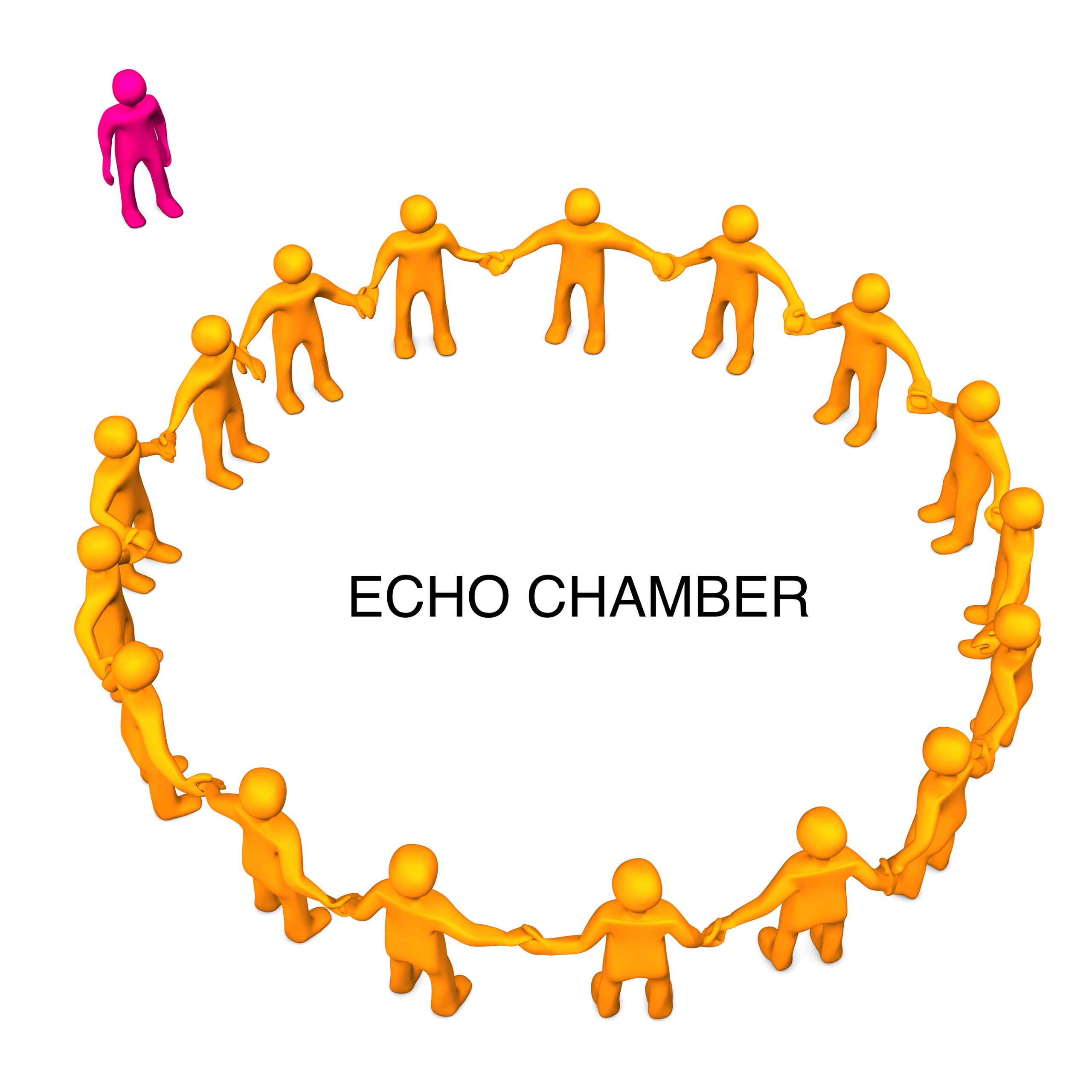
TOP TEN WAYS TO FTC IN SOCCER
1) STOP REVERSE ENGINEERING THE GAME
Some football teams NEVER sprint because football is a game of acceleration. Dumb.
Some high school basketball teams run 70 sprints because there’s 70 possessions in a typical game. Dumb.
Stephen Curry runs nearly three miles in an NBA basketball game. Does Stephen jog three miles every day? Hope not.
Soccer athletes may run seven miles in a game. Does this mean that we need seven miles of running to prepare for soccer? Hell no. Endurance running detrains athleticism. (Sorry Steve Magness)
When I ask soccer coaches to describe their best soccer player, I know the answer before it’s given… “FAST and EXPLOSIVE”.
If “fast and explosive” is the key to great soccer players, we should train our soccer athletes to SPRINT FAST, LIFT HEAVY, JUMP HIGH/FAR, and BOUNCE. (Too many coaches accept athleticism as genetic and immutable. Dumb.)
Case in point ⤵️
The tenth event of the decathlon is a critical lesson in feeding the cats. The tenth event is the 1500m (almost a mile). Decathletes are intentionally undertrained to run an endurance event. Why not train like a distance runner? The answer lies in the requirements of the other nine events. The 100m, long jump, shot put, high jump, 400m, 10m hurdles, discus, pole vault, and javelin, are SPEED & POWER events. Long slow distance running detrains athleticism. Example: cross country runners are slow in the 100m and suck in the shot put. Decathletes CHOOSE to be elite at the nine events at the expense of the 1500m. They allow the 1500 to be hard. (Their times are still very good though because of their athleticism.)
Stop seeing soccer through an endurance lens and start seeing the sport through an athletic lens. Endurance is easy, athleticism is hard. Do hard things.
Picture the winners of the Chicago Marathon. Do they look like fast and explosive soccer players?
“For us, it’s speed and explosion before anything else. Some strength coaches are mainly focused on getting athletes bigger. Other S&C coaches prioritize conditioning. At Princeton we want speed, we don’t want the fastest milers. We prioritize fast, explosive, and strong… in that order.”
~Mark Ellis, formerly S&C Princeton Lacrosse, now Director of Olympic Sports Performance at Northwestern
2) SPEED IS THE TIDE THAT LIFTS ALL BOATS
The most extreme human movement is sprinting in a straight line, spiked up, with the wind, and getting timed. Sprinting is more electrical than it is muscular. When sprinting, the central nervous system is pushed to its limits, and sometimes past its limits. Speed is governed by the CNS. When we consistently train max velocities, we raise the roof of the CNS, and just as important, we raise the floor. #SpeedReserve
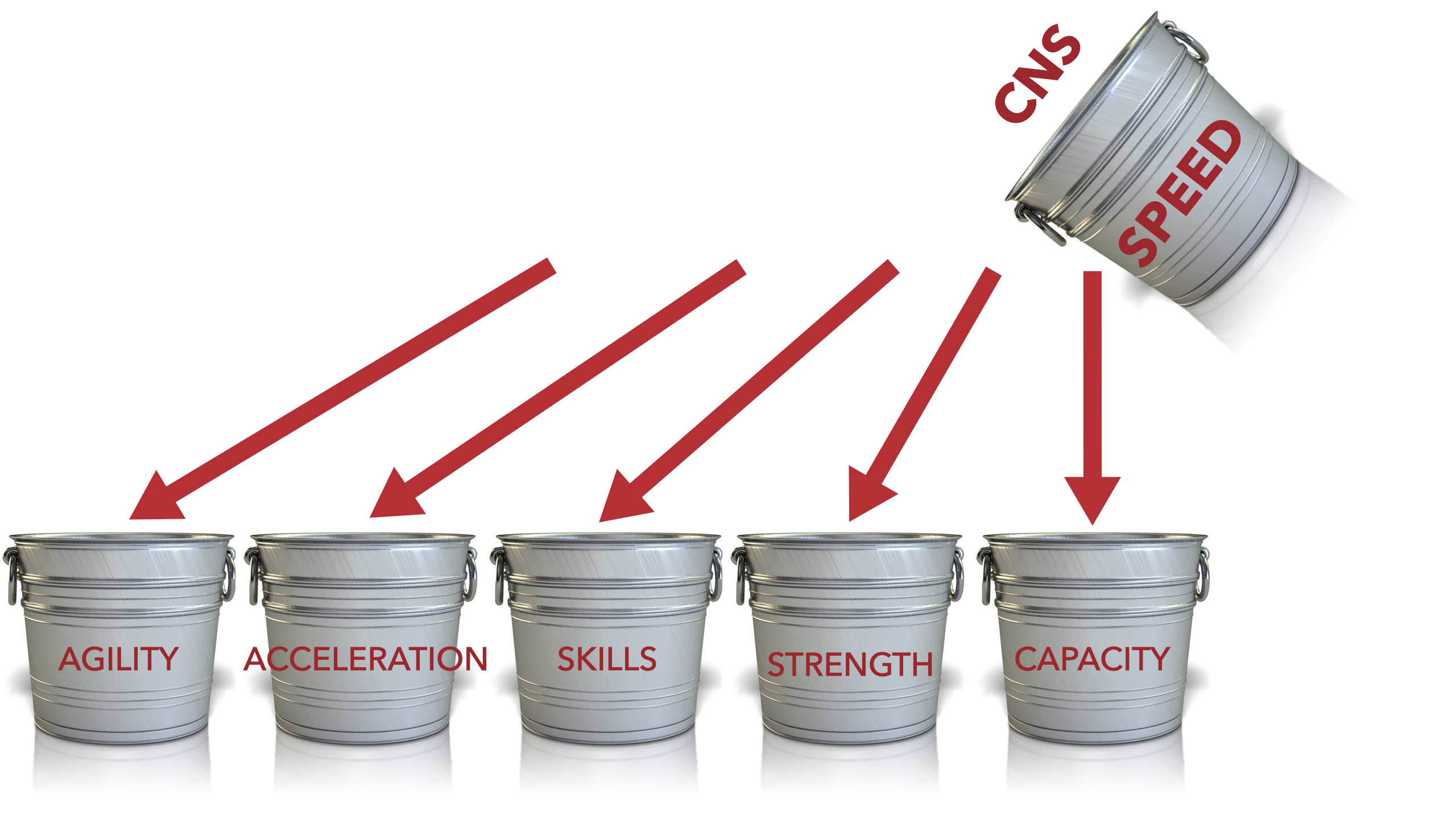
Since the CNS is global, all movement is improved when we increase the limits of the CNS. We become better at a quick first step, acceleration, and agility. We even get faster running in reverse. Golfers who get faster swing their club faster. Swimmers who sprint faster get faster in the water. Hockey players who sprint faster get faster on ice. Speed is not just another bucket to get filled. Speed is the tide that lifts all boats!
When we train the extreme, we train the range. It’s no different than weight lifting. If we train the bench press at 315 pounds, 220 gets easier. 135 feels light as a feather.
But how do we prioritize speed in-season?
Do the Atomic Speed Workout (ten speed drills and two timed sprints). Do this when fresh, 2-3 times a week. The Atomic Speed Workout (23-minute YouTube) can replace the worthless warmup I’ve witnessed before soccer practice, or even games. The Atomic Speed Workout (2 minute video) can be done in less than 20 minutes and includes only 60 seconds of work (high quality work).
Doing repeat sprints in a fatigued state is NOT speed training. Cone drills are NOT speed training. Playing soccer is NOT speed training. Sub-maximal running trains athletes to run at sub-maximal speeds. The CNS is never challenged.
The Atomic Speed Workout is entry-level speed work. If you want more (there’s lots more) see my CoachTube courses 101 and 102 at feedthecats.com.
3) DON’T BURN THE STEAK
The plague of injuries in high school, college, and professional sports can almost all be traced back to 1) too much volume, and 2) too little recovery.
Sports in America have a MORE-MORE-MORE problem. If you lose, we must work more. If you want to be the best you can be… GRIND. We’ve been taught that elite athletes worked for 10,000 hours to become elite.
A Feed the Cats program rejects the grind. When I finally retire as a high school coach (I’m entering my 43rd year), I will start selling the T-shirt below. Stay tuned.
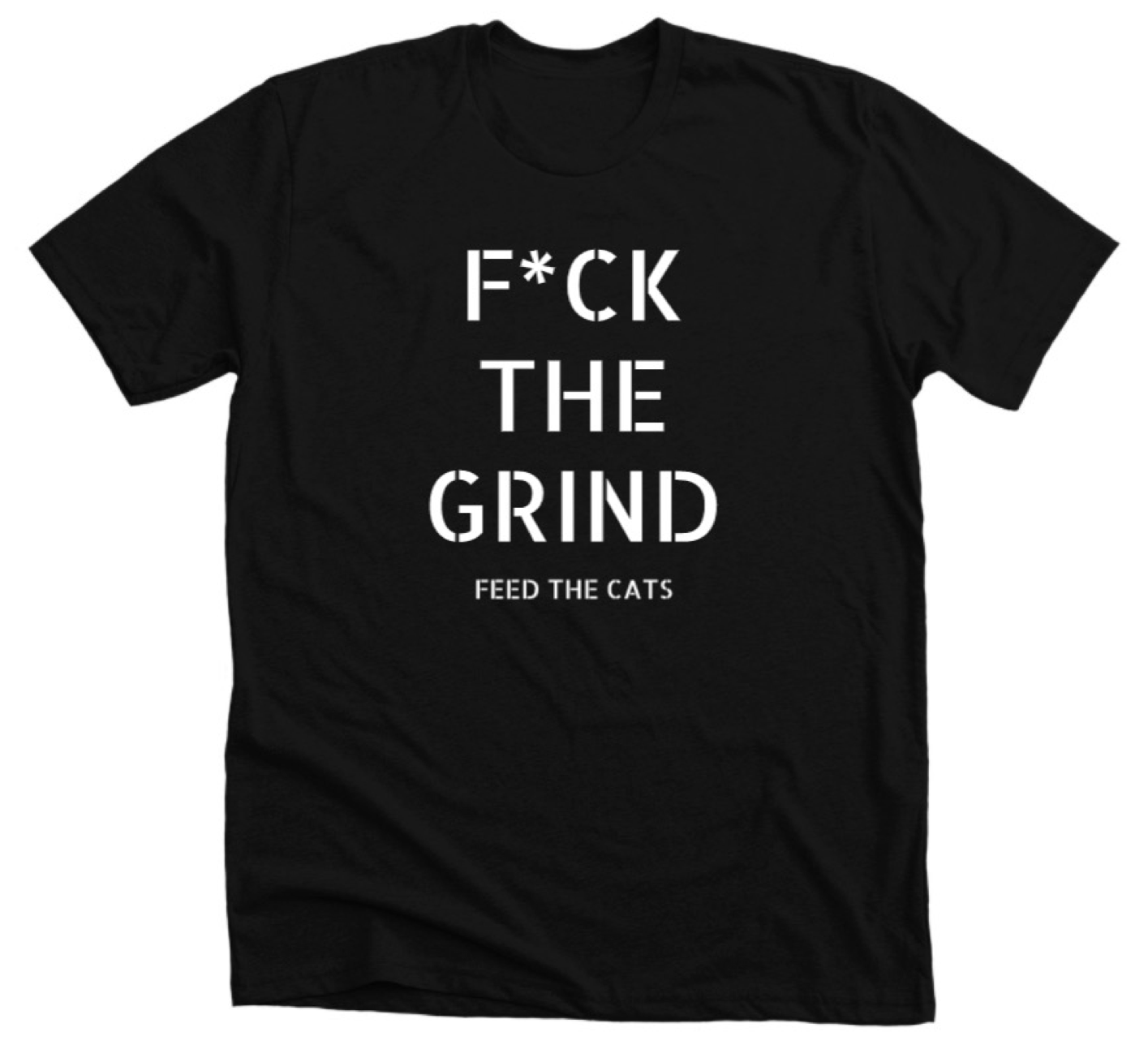
“Tired is the Enemy, Not the Goal” is the title of my book (which has been written but won’t likely be published until I stop coaching). The alternate title is “Never Let Today Ruin Tomorrow”.
These words run countercurrent to the foundations of sports in America. My ideas are polarizing. The “work hard” and “mental toughness” echo chamber dismisses the Feed the Cats approach as SOFT. In the coaching world, soft is the ultimate character assassination.
4) PYRAMIDS
I was highly influenced in the early 70s by John Wooden’s “Pyramid of Success”. Let’s look at my take on Old-School and New-School Pyramids.
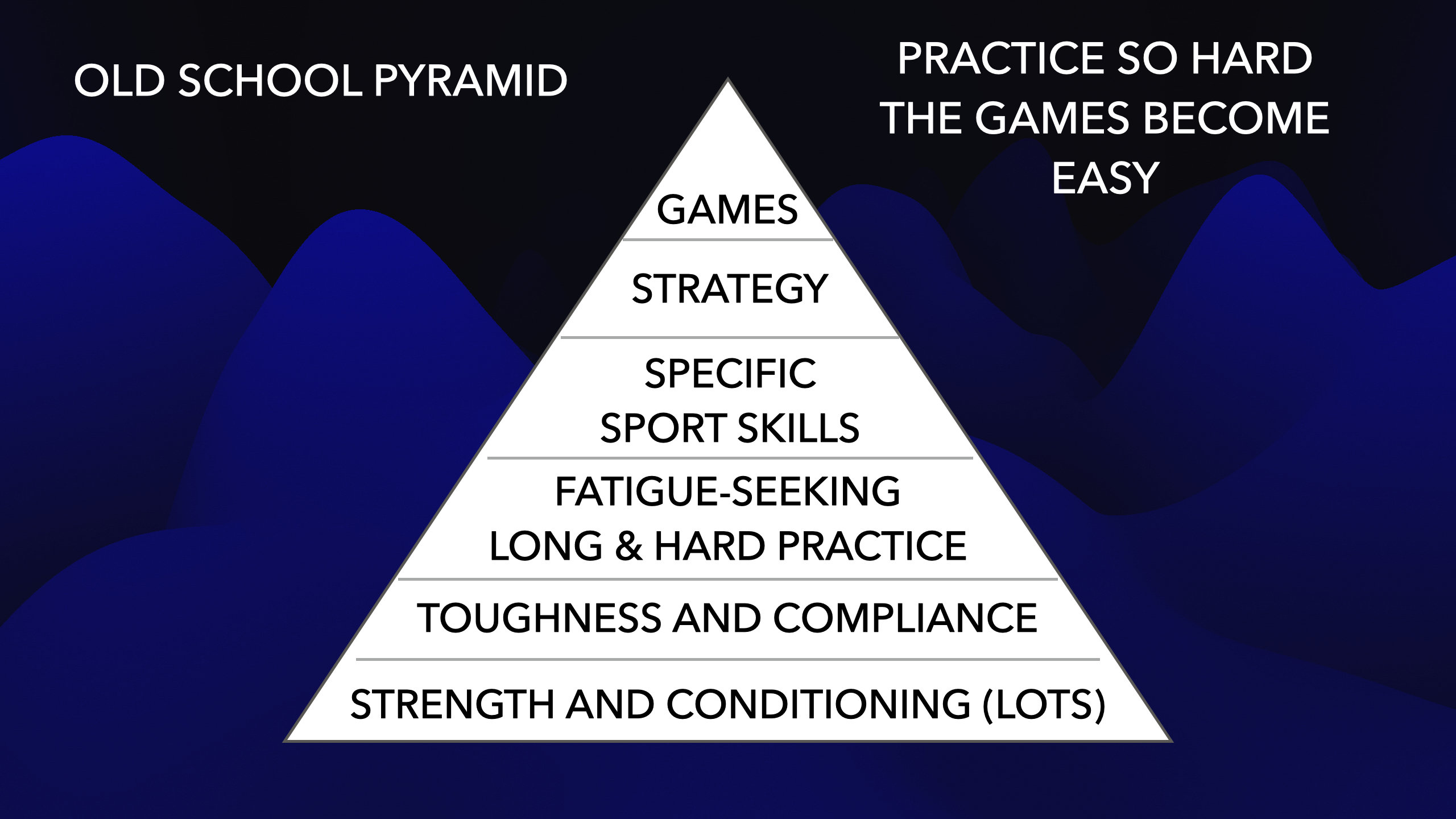
In my humble opinion, traditional coaches value hard work in practice more than they value high performance. Tired and broken athletes are encouraged to fight through their misery with “effort”. Effort is the only thing available when you don’t have the juice to perform at a high level.
The idea that practicing in a constant state of fatigue will magically make games EASY is one of the most ridiculous concepts of old school coaching. Practicing tired does NOT lead to endless energy to play fast and explosive soccer. That’s a hill I will die on.
Great athletes do not look forward to fatigue-seeking practices, but coaches don’t care. Norman Dale in Hoosiers, to the delight of old-school coaches everywhere, said “My practices aren’t designed for your enjoyment.”
My message is the antithesis to Norman Dale. “Make practice the best part of a kid’s day. Kids are good at what they like, obsessed with what they love.” I believe love creates toughness. We are willing to suffer for things we love.
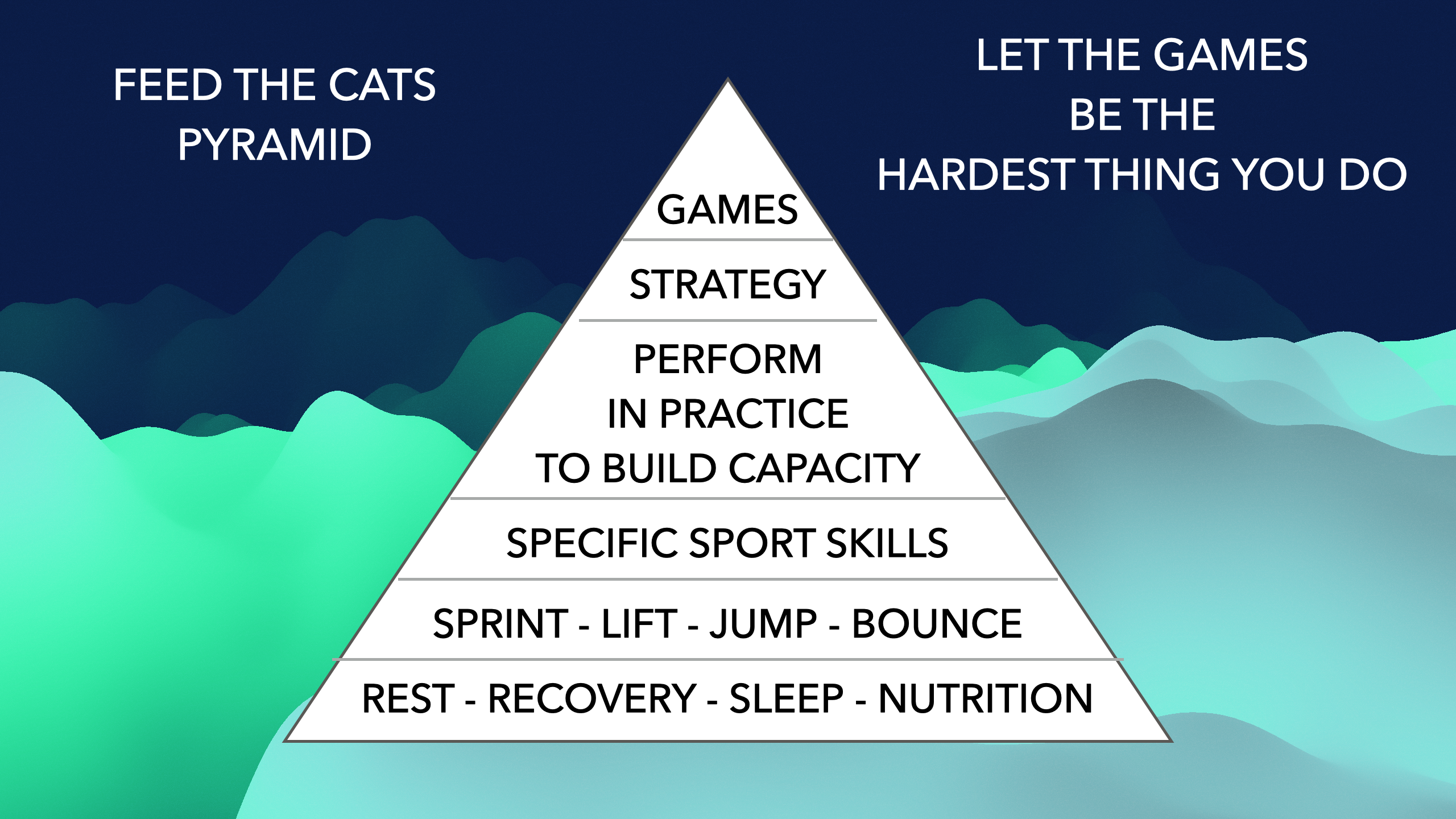
The FTC Pyramid focuses on the athlete’s physical and mental health and gets to performance-level work sooner.
Jamie Munro has urged me to quit vilifying hard work. Jamie says that I am simply “redefining” hard work.
I could argue every level of the FTC Pyramid is HARD. It’s hard to sleep nine hours every night. Nutrition is hard. Improving athleticism requires full intensity. There’s no end to the work that must be done to hone your craft (sports specific skills). Stacking performance-level efforts in practice, even with adequate recovery, is hard work. The FTC Pyramid REDEFINES hard work.
Even though both pyramids are drawn to the same height, I believe the FTC Pyramid reaches much higher. Isn’t that the goal?
5) REST, RECOVER, SLEEP
The foundation of a Feed the Cats program is the rest, recovery, and sleep required to keep athletes HEALTHY and HAPPY. Those terms roll off my tongue so easy that they don’t receive the significance they deserve.
To me, being healthy can be seen as both “not-broken” AND “physically able to perform at a high level”. The absence of injury is a poor take on the concept of healthy athletes. In my opinion, America’s fascination with HARD WORK disregards the concept of health.
We can also associate MENTAL health with PHYSICAL health. It’s hard to have one without the other. Broken and poor performing athletes are miserable. I was seldom healthy as an athlete. Until I was 40, I coached how I was coached, believing that toughness was the vaccine for broken.
My use of the word “happy” is often criticized as being soft. My trolls think I’m a “trophy-for-every-kid” coach. I’m often called a “snowflake”. Feed the Cats is hated by coaches who rail against “The Pussification of America”.
“Happy” speaks of the mental health of athletes. Happy athletes don’t have to be pushed. Instead, they are willing to suffer through hard things because they love what they are doing. Happy in a FTC sense is not the same as the happiness you experience when goofing around with friends. Happy, to me, is falling in love with the mission. The mission is athletic performance.
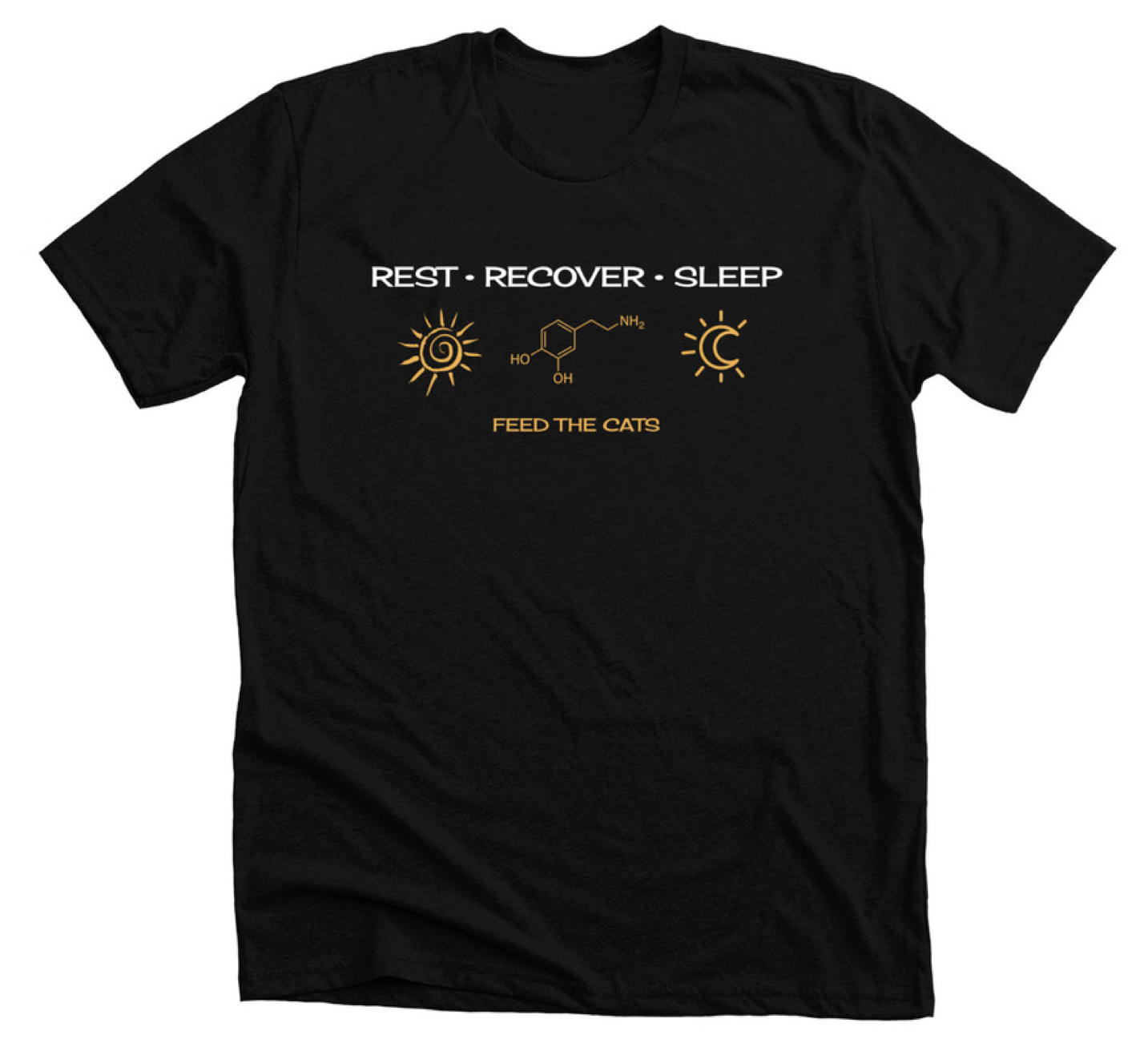
The symbols on my T-shirt? In the middle is the structural formula of dopamine. Dopamine is a feel good neurotransmitter that allows us to move our arms and legs faster. Mentally, dopamine gives us reckless confidence. Sounds good for athletes, huh?
The other two symbols give us a recipe for increasing dopamine… SUNSHINE and SLEEP. Indoor living and sleep deprivation are the dregs of modern life. In addition to sunshine and sleep, we get hits of dopamine when we accomplish things. Make your bed when you wake in the morning, get a hit of dopamine. Ace a test, get a hit. Score a goal, get a big hit. Winning begets winning.
6) RECORD, RANK, PUBLISH
Competition is the food of cats. Great coaches gamify training. “GAMIFY” has a dual meaning for me: 1) make practices like the game, and 2) measure performance and record, rank, and publish.
Make sure you measure what matters, or in other words, measure meaningful things to make meaningful things more meaningful.
I’ll leave soccer-specific measurements to the experts, but athletic measurements need to include sprint times, vertical and horizontal jumps, and weight room numbers (multiple reps, perfect form). With the right technology, you can measure bounce, too.
One of the best measures of speed is the “Fly-10”. Basically, athletes run a 40y dash but we only time the final 10y using Freelap. The “Fly-10” measures the ceiling of the CNS. To make the numbers more relatable and significant, we convert to mph (20.45 divided by the 10y fly time). For my high school boys track team we hand out wristbands for 20, 21, 22, 23 mph. We’ve had only one guy run over 24 mph and he ran in the 100m Olympic Trials when he was 18.
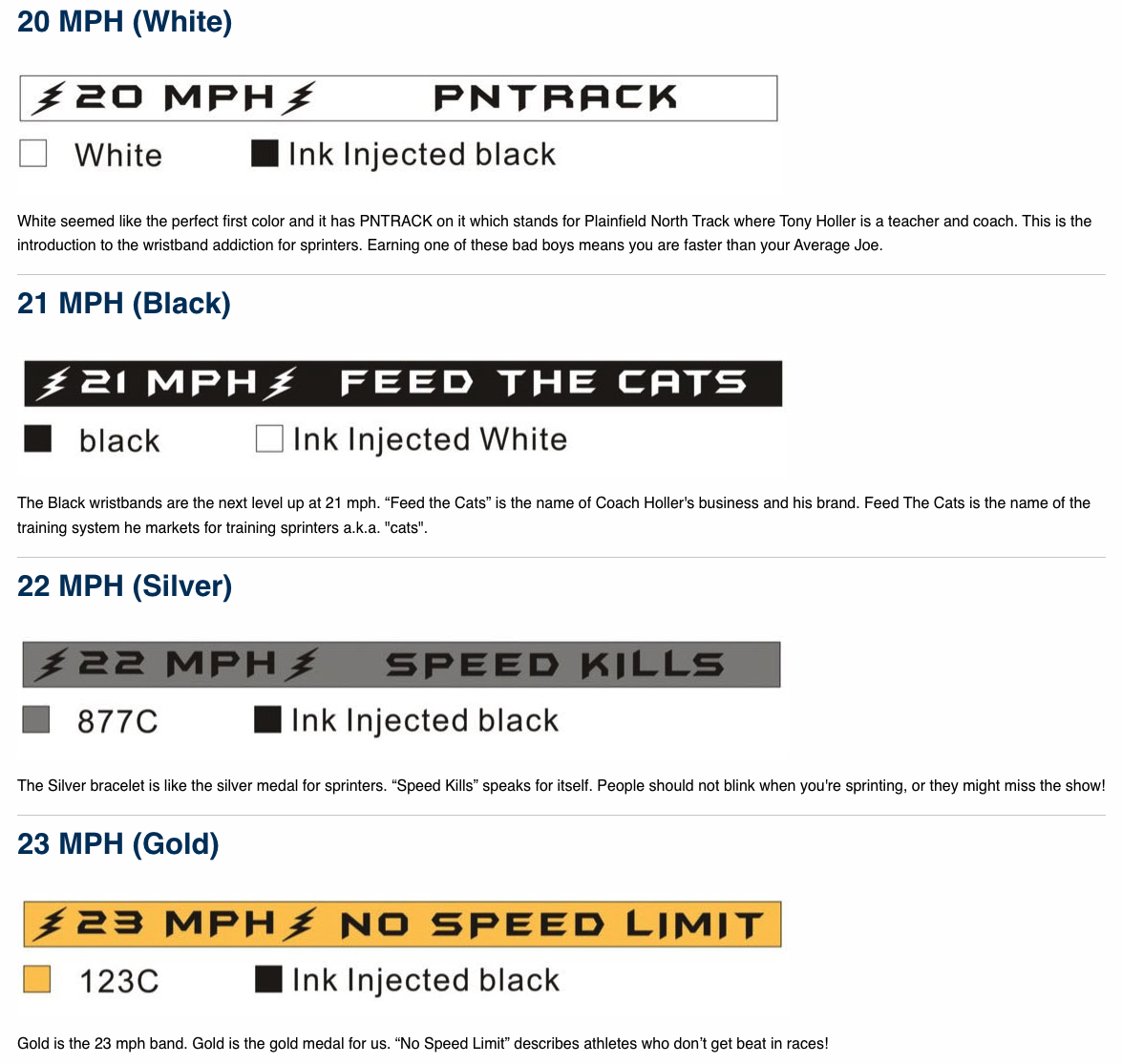
For a boys soccer team, I would go with 19, 20, 21, and 22 mph bands.
For a girls soccer team, I would go with 16, 17, 18, 19 mph bands.
I would also encourage you to register your team with Les Spellman’s Universal Speed Rating (free). Seeing progress is the key to motivation.
7) HOW ABOUT THE WEIGHT ROOM?
“Lift Heavy” is one of my four fundamentals of athleticism. Strength is good.
However, I believe the weight room should never be allowed to interfere with speed training and never ever be allowed to interfere with an in-season sport. No pain, no gain should never be the rally cry.
Be GENERAL in the weight room, be EXTREME in speed training, be SPECIFIC in soccer practice.
8) ALLOW THE SEASON TO BUILD CAPACITY
“But coach, we must be ready to play 80 minutes in the first game!” Every coach wants to check the conditioning box first. It’s like an obsession. College athletes are sent ridiculous workouts that they must do all summer to prepare for a stupid, and I mean STUPID conditioning test.
I’ve promoted the concept of being patient in building capacity to college lacrosse coaches who worry about their level of conditioning for the first game. Worry might be to weak of a word. The fear of not being in game-shape keeps coaches awake at night.
“What if your team is FASTER and more explosive than your opponents? What if you enter game-one with a full roster, 100% healthy, while your opponents have tired and broken athletes because they wanted the mental toughness that comes with a conditioning focus? What if your athletes believed that practice was the best part of their day and they began to LOVE their sport rather than merely PLAY it? Would you have a chance to win?”
And one more thing, “What game is most important, the first game or the last game?”
Let the season build your team’s capacity and endurance. Don’t sacrifice the health and athleticism of your athletes to get them into shape. Let the game be hard. F*ck the grind.
9) WAVE THEORY
How do you set up high performance days without progressively overcooking the steak? As coaches, we intuitively know this answer.
Even though I played for traditional football, basketball, and track coaches back in the 70s, they would back off the day before the competition. In other words, even though they burned the steak all week, they understood that a LOW day was needed to set up a HIGH day.
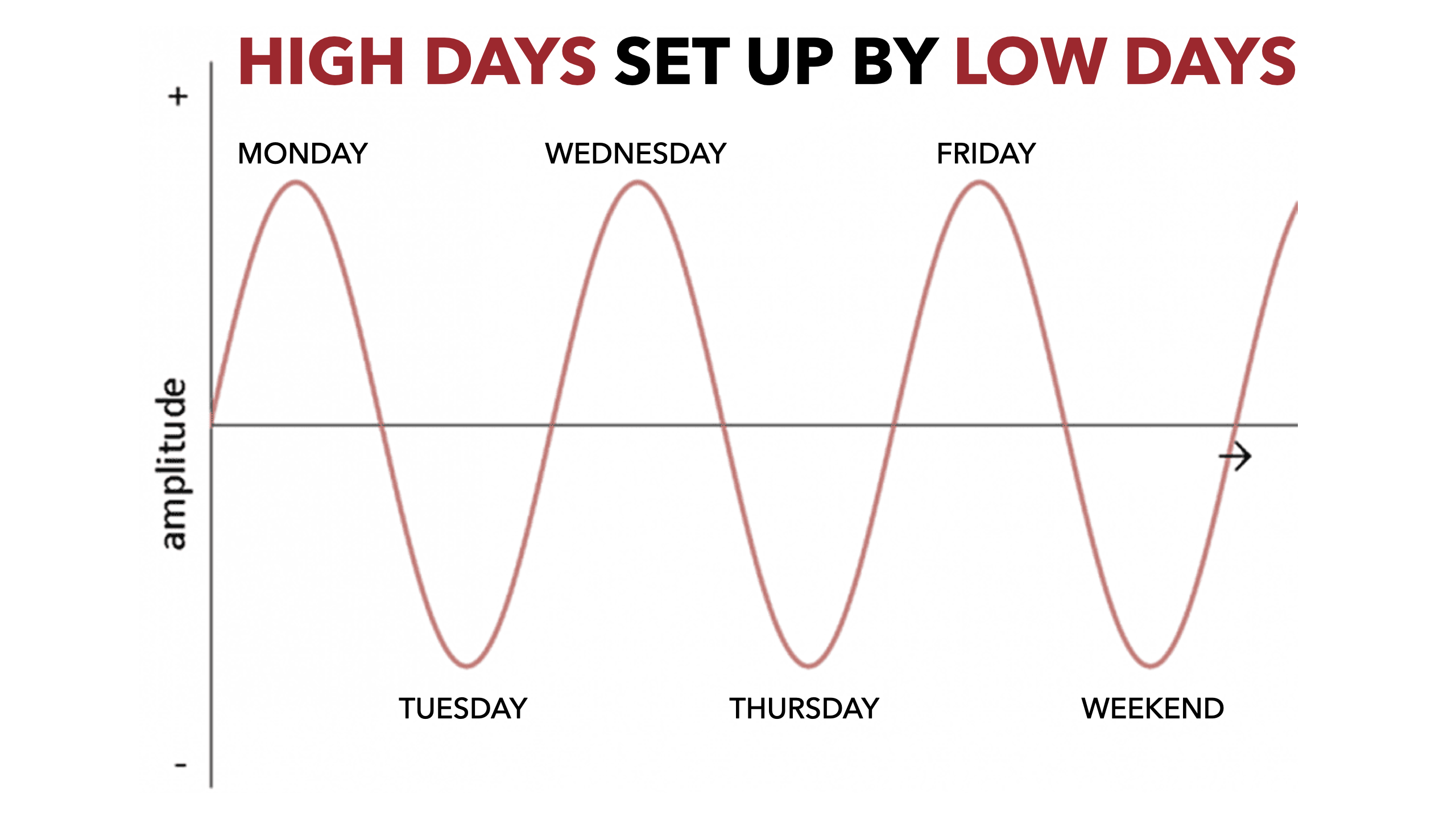
The fundamental difference between the old-school approach and mine is the idea that we need to perform in practice, too. If we play games on Tuesday and Saturday, those are performance days that need to be set up with a low day. The two low-day options are 1) off-day, or #2) “fundamental practice”.
Let’s look at the Tuesday-Saturday game schedule:
Monday: Fundamental Day (low volume, low intensity skill work, strategy, etc)
Tuesday: Game
Wednesday: Fundamental Day
Thursday: Performance Practice
Friday: OFF
Saturday: Game
Sunday: OFF
If you have three games in a week, there will be no performance-level practices. Three high days are the max.
In my opinion, if you aren’t taking two days off every week, athleticism is detrained. Personally, I think teams respond best to a four-day work week. I know that doesn’t fit in with our tradition of hard work for the sake of hard work, but I want fast, explosive, happy, and healthy athletes.
I’m sure some of you are thinking about a team that wins every year and they are 100% old school. Well, if everyone is old school, talent wins. Or maybe losing teams are working even harder in their attempt to win games. In that case dumb is beating dumber. (Dumb is undefeated against dumber.)
10) ESSENTIALISM, THE FTC BIBLE
“The way of the Nonessentialist is to go big on everything: to try to do it all, have it all, fit it all in. The Nonessentialist operates under the false logic that the more he strives, the more he will achieve, but the reality is, the more we reach for the stars, the harder it is to get ourselves off the ground. The way of the Essentialist is different. Instead of trying to accomplish it all – and all at once – and flaring out, the Essentialist starts small and celebrates progress. Instead of going for the big, flashy wins that don’t really matter, the Essentialist pursues small and simple wins in areas that are essential.”
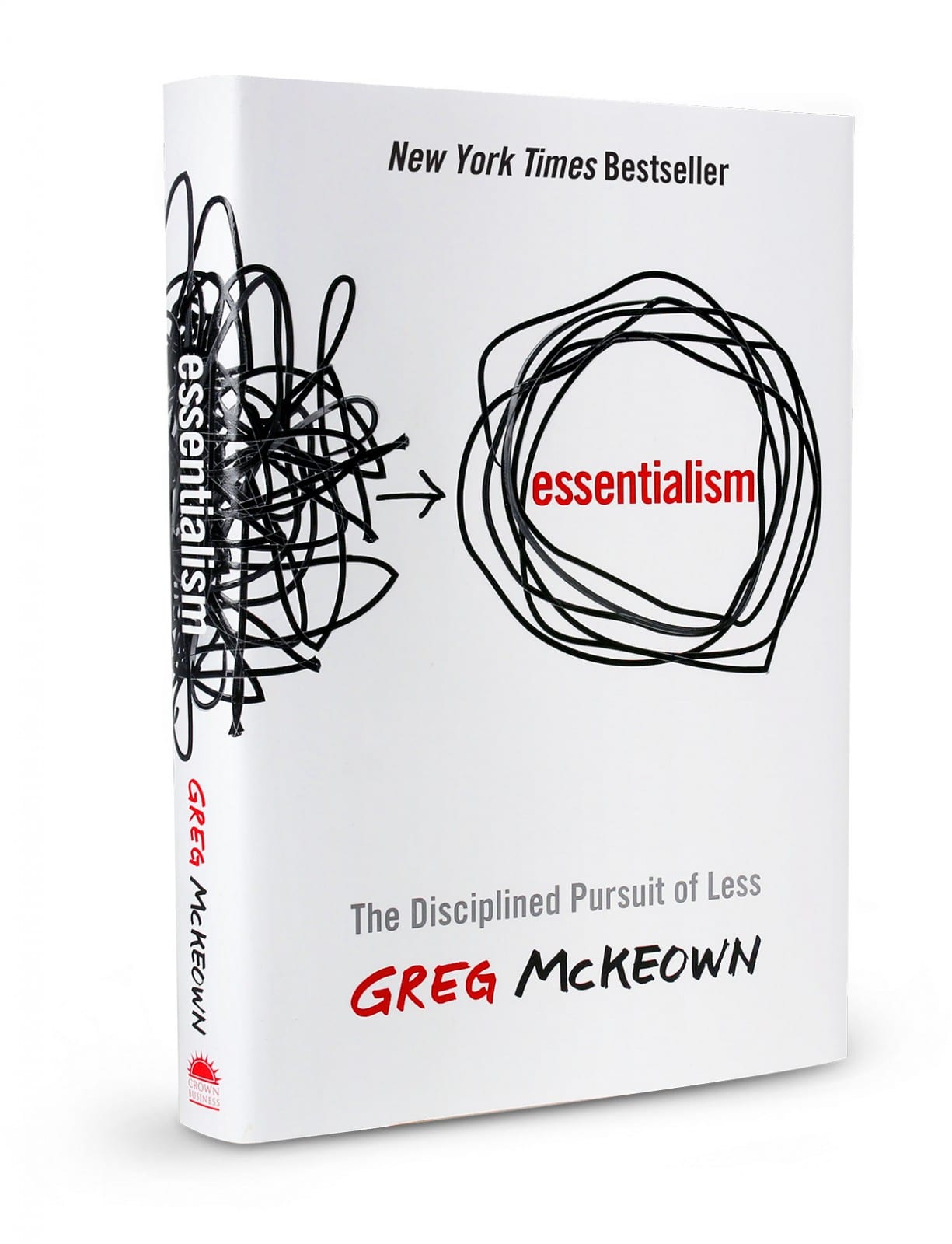
“Essentialism is not about how to get more things done; it’s about how to get the right things done.”
+++
More FTC Soccer Resources
Sprint Jump Throw Performance Podcast Episode 4: Feed the Cats Soccer Roundtable with Tony Holler
Speed Training for Soccer Athletes: The Soccer Queens Podcast with Erica Suter
Make Athletes, Not Distance Runners: Podcast Ep. 9 With Mike Whiteman
Phi – Lacrosse – Ophy Podcast Season 3, Ep. 35 Speed Guru Tony Holler
Get USR Speed Certified: Universal Speed Rating
Featured Image Photo Credit
Vienna Reyes on Unsplash

